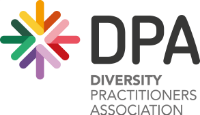Transitioning to Diversity, Equity and Inclusion - Intersectionality Calls Us to Action
/This blog post has been written by DPA Member, Barb Sheehy.
The right [and societal expectation] to own a seat at decision tables and a workplace to participate in change making conversations.
Trending in 2021 is expanding the decades notion of Diversity and Inclusion to Diversity, Equity and Inclusion [DEI] as an organisational strategy. As societal voices call for organisations to take greater accountability of DEI business practices, it will require practitioners to be, rightly represented, at the C-Suite. It will require organisations to future proof its efforts and provide resources, budgets and teams to critically lead in growing, innovating and attracting talent eagerly evaluating ones Diversity Equity and Inclusive culture.
Importance placed on practitioners to drive organisational change and conscious societal advocates to remain globally competitive, is highlighted by the increase to create and appoint I&D executive leadership roles. In 2020, a LinkedIn survey found globally, appointments with a Head of Diversity title increased by 107%, Director Diversity 75% and Chief Diversity Officer 68% over the past 5 years.
Organisations campaigning commitments and tangible goals are actively monitored by global talent and society in general. It’s calling for organisations to be more transparent in their Diversity, Equity and Inclusion activities. Social injustices and COVID pandemic have influenced reckoning for transparency with a Human Rights lens, in particular UNDRIP [United Nations Declaration Rights of Indigenous Peoples], UDHR [Universal Declaration of Human Rights] and UN Women [gender equity and empowerment of women]. The ability to attract talent is dependent on an organisation’s capacity to demonstrate treatment of its employees [culture], that its leadership reflects society consciousness [advocates] and a workplace that fosters career progression, opportunities and development pathways based on equity [trust retention].
· With the necessity to get the balance right, how then does intersectionality influence culture, advocacy and trust retention within an organisation?
· Does understanding intersectionality significantly impact organisational change and or its values towards inclusion and diversity?
· What are the benefits of redesigning an Inclusion & Diversity business strategy to include equity?
Organisations may be fatigued with embedding significant reforms through policy, procedures and processes across its complex, multi functions. Some organisations may view existing strategies adequate and these advances should satisfy and drive desirable change. But is it really? Are there consequences for an organisation to underestimate the evolution of equality and benefits to intersectionality?
So, what is intersectionality?
The use of the term “intersectionality” was theorised in 1989 by legal and race scholar Kimberlé Williams Crenshaw
Image source: Subcultures and Sociology, Grinnell College
Deloitte [Insights, 2014] described intersectionality as the notion that social identities, such as race, gender, sexuality, class, marital status, and age, overlap and intersect in dynamic ways that shape each individual. In other words, all of us possess more than one social identity (that is, an unmarried Asian female over 40 is at once unmarried, and Asian, and female, and over 40). This concept—in contrast to the one-dimensionality of most D&I efforts—more accurately captures the complexity of the human experience
To enable organisations aspired for disruption with outdated approaches in this space, practitioners may consider these drivers to embed equity and intersectionality into inclusion and diversity practices or strategies:
· Reviewing policies and practices that reflect and respect intersectionality aligned to business strategy;
· Embedding gender neutral and non-binary inclusive language as a normalised practice in policy and capability;
· Collate DEI data and publish transparent annual reporting to include race, orientation, ethnicity, gender, physical ability and sexual orientation (Glassdoor report 2020);
· Establish DEI programs to directly address gender representation and racial inclusion across all levels of the organisation;
· Develop leadership skills and capability programs that include intersectionality and intercultural lens;
The shift to embed Diversity Equity and Inclusion and Intersectionality in unison can be a revolutionary catalyst for practitioners and organisations invested to enact change. Together we must participate in strategy conversations, be present at decision tables, lead these important conversations and influence workplace cultures. Societal expectations and diverse talent groups are watching. The positive, we are on the brink of significant change to shape a global future in the DEI space. At its core is a human centric approach and a vision to be truly inclusive for all.
Should I walk in the room and leave the gay out of the room, or leave the black out of the room? For most of my career I’ve had some variation of this question. I think the way to talk about being black and gay is to talk about being whole, being a whole being [Robert O’Hara, Playwright]
Additional resources
WORK180 DEI toolkit and framework to develop an organisation strategy or plan.
PwC releases its first Inclusion and Diversity Transparent report, September 2020.
Game Changers: Diversity, Equity and Inclusive initiatives creating better career opportunities.














